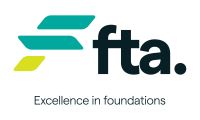Ultraviolet (UV) radiation is a type of energy produced by the sun and some artificial sources, such as arc welders and solariums. The sun’s UV is the main cause of skin cancer. Too much UV exposure also causes sunburn, tanning, premature ageing and eye damage.
Skin cancer
Skin cancer occurs when skin cells are damaged, for example, by overexposure to UV radiation from the sun.
Types of skin cancer
There are three main types of skin cancer:
- Basal cell carcinoma
- Squamous cell carcinoma
- Melanoma - the most dangerous form of skin cancer.
Both basal cell carcinoma and squamous cell carcinoma are known as non-melanoma skin cancer or keratinocyte cancers. Keratinocyte cancer is more common in men, with almost double the incidence compared to women.
Signs and symptoms of skin cancer
The sooner a skin cancer is identified and treated, the better your chance of avoiding surgery or, in the case of a serious melanoma or other skin cancer, potential disfigurement or even death.
It is also a good idea to talk to your doctor about your level of risk and for advice on early detection.
Become familiar with the look of your skin, particularly spots and moles, so you pick up any changes that might suggest a skin cancer.
Look for:
- Any crusty, non-healing sores
- Small lumps that are red, pale or pearly in colour
- New spots, freckles or any moles changing in colour, thickness or shape over a period of weeks to months.
Checking for skin cancer
Nearly all skin cancers can be cured if detected and treated early. You often can’t see or feel skin cancers so it’s important that you regularly check, or a medical practitioner regularly checks your skin for changes in shape, colour or size of existing freckles moles or spots.
For more information on doing a self-assessment, visit the Cancer Council website.
If you notice a concern, contact a medical professional, or general practitioner to further investigate.
Sunscreen issues for construction workers
Solvents, adhesives, and sealants can degrade the chemical UV filters in sunscreens, causing them to lose their effectiveness and leaving the skin vulnerable to sun damage. Workers who are in occupations with higher exposure to solvents and other chemicals can be more likely to experience the ineffectively of certain sunscreens.
What solvents and chemicals can impact sunscreen?
There are a variety of solvents that can reduce the effectivity of sunscreens such as acetone, benzene, toluene, xylene, trichloroethylene, ethanol, isopropanol and more
What types of sunscreens are not impacted by exposure to solvents?
Zinc oxide sunscreens are not found to be affected by chemical and solvent exposure.
Preventing skin cancer
For best protection, when the UV level is 3 or above, consider a combination of sun protection measures. Be extra cautious in the middle of the day when UV levels are most intense.
Slip
Slip on sun protective clothing. Check the SPF rating of work clothes and cover as much skin as possible. Not all clothing is protective, to protect against UV rays, consider clothing that:
- Is dark in colour to inhibit UV light penetration
- Has a close weave fabric to block out UVR
- Has long sleeves or long trousers and a collar.
Slop
Slop on a broad-spectrum, water-resistant sunscreen of SPF 30 or more. Consider the possibility of exposure to chemicals and solvents and ensure the sunscreen you are choosing will not degrade when exposed to chemicals in your workplace.
- Applying liberally to clean, dry skin at least 20 minutes before going outside about a teaspoon per limb and half a teaspoon to the face and neck
- Reapplying at least every two hours
- Using zinc cream for lips, ears, and nose for extra protection
- Make sure that the sunscreen is stored in a cool dry place and check the use by date before applying.
Slap
Slap on a hat that covers the face, head, neck and ears to block exposing sensitive skin to the sun. Choose a hat that has a close weave and broad brim (10-12 cm).
Seek
Seek shade and breaks from the sun, and prevent exposure to the sun where possible.
Slide
Slide on sunglasses. Make sure that if they are safety glasses, that they meet Australian Standards, and are safe to wear at work.
Steps for controlling the risk of sun exposure
For employers or persons conducting a business or undertaking (PCBU), it’s your duty to use a risk management approach to protect your workers as outlined in the Work Health and Safety Act 2011.
Step 1: Identifying Risks
You should periodically carry out assessments to identify:
- workers who have a high risk of exposure to UVR
- situations or work systems that involve high exposure to UVR
- ongoing local UV forecasts from the Bureau of Meteorology.
Exposure to UVR during outdoor jobs depends on a range of factors, including:
- the location of jobs
- the time of year and times of day when outdoor work is being done
- the pattern and length of exposure - exposure can be in one long episode or through a series of shorter episodes which add up over the course of a day
- the presence of reflective surfaces such as water, metal or concrete
- the presence of photosensitisers – these cause photosensitivity, or abnormally high sensitivity of the skin or eyes to UVR. Examples of photosensitisers are industrial chemicals, drugs, plants and some essential oils and fragrances.
Step 2: Assessing the Risks
You can consult with workers and their representatives through informal conversations, surveys, interviews or focus groups, to learn more about:
- incidences of sunburn or heat-related illness
- ways they’re being exposed to UVR
- current behaviour in regard to sun protection
- whether any sun protection measures already in place are effective or need to change.
Step 3: Controlling the Risks
When you’ve assessed the risk, collaborate with your workers to minimise the risk. The most effective way to control risks is to eliminate the hazards. For example, it may be possible to complete work at night, eliminating sun exposure.
If this isn’t possible, consider other controls using the Hierarchy of Controls
- Engineering controls - physical measures including mechanical devices or process.
- Administrative controls – work methods or procedures to minimise exposure to a hazard
- Personal protective equipment and clothing (PPE).
Engineering controls
These are changes to the work environment that reduce exposure to UVR. They can include measures such as:
- providing shaded areas or temporary shade, including indoor or shaded areas for rest and meal breaks
- applying window tinting on work vehicles
- modifying reflective surfaces.
Administrative controls
These are changes to work procedures and the way that work is organised to reduce UVR exposure, such as:
- scheduling outdoor work tasks when levels of solar UVR are less intense, for example, earlier in the morning or later in the afternoon
- scheduling indoor and shaded work tasks when levels of solar UVR are strongest, for example, in the middle of the day
- encouraging workers to move jobs to shaded areas
- encouraging workers to rotate between indoor, shaded and outdoor tasks to avoid exposure to solar UVR for long periods of time
- making the UV index available every day and encourage use of the SunSmart app.
- identifying and minimise contact with photosensitising substances, which can increase your sensitivity to UV radiation.
Personal protective equipment and clothing
Provide personal protective equipment (PPE) and clothing that gives a barrier between your workers and the sun, such as:
- sun protective work clothing (UPF 45+) like collared, long-sleeved shirts and long trousers
- sun protective hats which cover the face, head, ears and neck
- sunglasses which meet Australian standards
- broad-spectrum, SPF30+ water resistant sunscreen.
Step 4: Reviewing the Risk Controls
Risk management is an ongoing process. Circumstances can change and you need to regularly review the work environment to identify any new risks.
According to work health and safety laws, you’re required to review your control measures in the following situations:
- When you become aware that a control measure isn’t working
- When there’s been a change that might give rise to a new risk
- When you identify a new hazard or risk
- When workers indicate that a review is needed
- When a supervisor or health and safety representative requests a review
- When the dynamic and complexity of your business change.
Resources for skin cancer information and support
Need more information?
If you haven’t found the answer to your questions on our website, give us a call or email us.





